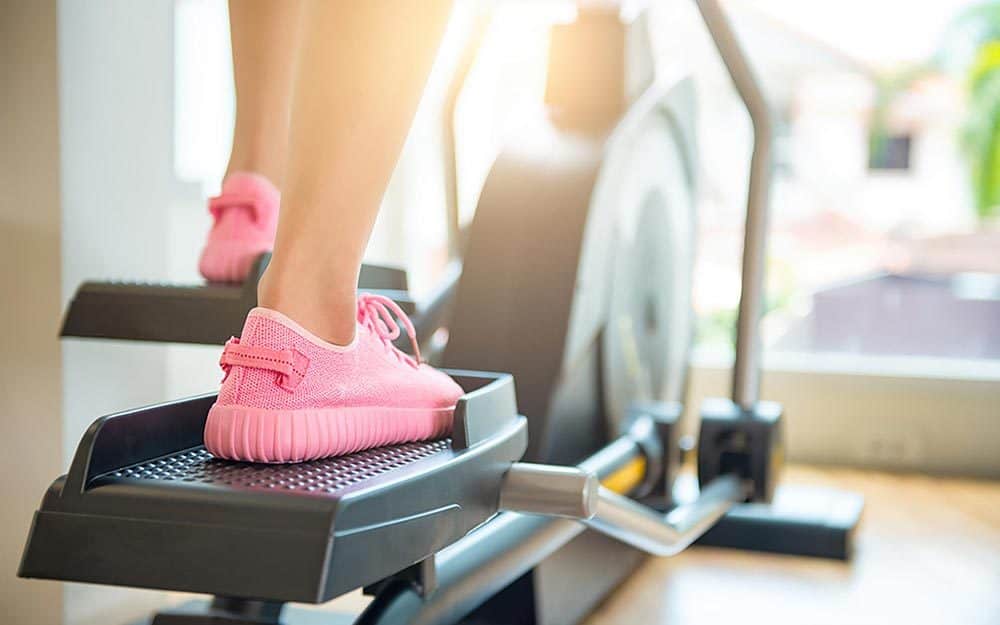How to Lubricate an Elliptical
Proper elliptical maintenance is crucial for ensuring its longevity and optimal performance. In this guide, we’ll explore how to lubricate an elliptical and keep it running smoothly. We’ll discuss the best lubricants to use, the choice between grease and lubricant, what lubricants to avoid, and provide step-by-step instructions for lubrication. Additionally, we’ll answer common questions about elliptical lubrication to help you maintain your fitness equipment effectively.
What Can I Use to Lubricate My Elliptical?
What is the best lubricant to use?
For optimal elliptical maintenance, it’s advisable to stick with the manufacturer’s recommended lubricant, which is typically provided with the machine. If you run out, consult the elliptical manual or contact the manufacturer to order the appropriate lubricant before you lubricate an elliptical machine. Using manufacturer-approved lubricants ensures compatibility and efficient performance.
Is grease or lubricant better for lubricating an elliptical?
The choice between grease and lubricant for lubricating ellipticals depends on the machine’s components. Grease, such as red-lithium or white-lithium grease, is suitable for bearings in moderate-speed ellipticals. Lubricants, on the other hand, are ideal for high-speed applications and areas with extreme friction. However, caution is needed when applying lubricant near electrical components, as it can potentially damage them.
What lubricant should you avoid?
Avoid using household greases, oils, or other lubricants on your elliptical machine, as they can potentially harm its plastic parts and remove existing lubrication. Such alternatives may impede proper movement and lead to damage. It’s best to use manufacturer-recommended lubricants or those specifically designed for fitness equipment to ensure the longevity and functionality of your elliptical.
Should you use WD-40 to lubricate your elliptical?
Avoid applying WD-40 or any harsh substances to your elliptical. These can damage the wheels and ramp, leading to costly repairs, as they are not suitable lubricants.
Our recommended Lubricant:
SEKODAY Silicone Treadmill Belt Lubricants/Lubes
Last update on 2024-07-26 / Affiliate links / Images from Amazon Product Advertising API
Spot On 100% Silicone Treadmill Belt Lubricant
Last update on 2024-07-26 / Affiliate links / Images from Amazon Product Advertising API
How To Lubricate An Elliptical (Step-By-Step Guide)
How to Tell if Your Elliptical Needs Lubrication
- Identify Moving Parts: Carefully examine your elliptical to locate all the moving parts that create friction during exercise. Ensure no area is overlooked to prevent excess friction and potential damage.
- Gently Open Access Points: Using the appropriate tools, remove bolts and screws that grant access to the friction points. Be meticulous with these fasteners to ease reassembly later.
- Thoroughly Clean Components: Before lubricating, it’s essential to clean the designated areas thoroughly. Eliminating dirt and debris helps prevent noise and additional friction caused by foreign particles.
- Apply Lubricant/Grease: Choose between lubricant and grease based on the level of friction. Typically, use grease on parts with moderate friction, such as elliptical bearings, and lubricant on high-friction areas. Follow manufacturer recommendations.
- Reassemble Lubricated Parts: Reassembling the machine can be complex. To make it easier, take photos or videos before disassembly for reference. This will help ensure proper reassembly.
- Tighten All Fasteners: After reassembly, ensure all bolts and screws are securely tightened. This step is crucial to prevent issues like noise, broken parts, or instability during workouts.
- Trial Exercise: Before returning to your regular exercise routine, initiate a slow trial workout to confirm that the lubrication process was successful. Start slowly, and if everything runs smoothly, you’re good to go. If issues persist, consider seeking professional assistance.
How often should you lubricate your elliptical machine?
The recommended frequency for lubricating your elliptical machine largely depends on the manufacturer’s guidelines and your machine’s usage. Typically, manufacturers advise applying lubricant every 3 to 6 months, but this can vary. To determine the precise lubrication schedule for your elliptical, consult the manufacturer’s recommendations provided in the user manual or on their website. Adhering to the prescribed maintenance schedule ensures that your elliptical functions optimally and remains in good working condition, making your workouts more enjoyable and safe.

How do you fix a squeaky elliptical exercise machine?
If you’re dealing with a squeaky elliptical exercise machine, addressing the issue requires attention to detail. Begin by identifying the source of the squeak, as it could be indicative of an underlying problem. In many cases, applying lubrication to the moving components may resolve the squeaking. However, if the noise persists despite lubrication, it’s advisable to seek professional assistance. Squeaks could be a sign of a more significant problem that needs expert evaluation and servicing to ensure the continued smooth operation of your elliptical.
An ex-triathlete, fitness coach and writer with a Masters in Sports Physiology. Fitness is my passion and I've had my fair share of home fitness equipment tried and tested!




